
MAIN FEATURES
- Editorial deadlines vary; contact author
- Advertising for print, digital & sponsorship opportunities, contact sam.dack@wrbm.com
State of the nation
The past year has seen dairy prices in the mults rocket, driven by record farmgate milk prices caused soaring production costs. Now, in the face of higher production volumes and falling demand, prices are falling, with farmgate prices down up to a third since the new year – despite production costs remaining elevated. Where could prices end up at this year, and how will that impact production and consumer demand? How has the relationship between retailer and suppliers changed over the past year?
By Kevin White kevin.white@thegrocer.co.uk
Power list: Women in dairy
By Grace Duncan grace.duncan@thegrocer.co.uk
Technology
The most important technological breakthroughs in dairy – past, present and future
By George Nott george.nott@thegrocer.co.uk
Food safety: Listeria
What is listeria? What causes it in dairy? How serious is it? Why has it been in the news this year? Which dairy suppliers have been affected? Has this been a typical year in terms of number of cases? How do dairy suppliers tackle listeria? Are they doing enough? What else could be done?
By Jack Thompson jackthompsonjournalist@gmail.com
Exports
How has the business of exporting dairy changed over the past year? What challenges remain?
By Maria Gonçalves maria.goncalves@thegrocer.co.uk
CATEGORY REPORTS
- Advertising for print, digital & sponsorship opportunities, contact sam.dack@wrbm.com
British cheese
- By Patrick McGuigan pat_mcguigan@yahoo.co.uk
- Submissions deadline: 3 August
- Advertising deadline: 1 September
As inflation continues to bite, the price of British cheeses in supermarkets are soaring. They’re up by an average of 20% per kilo, Kantar data shows. While this is keeping most varieties in value growth, volume sales are plunging for all – with one exception. Cheddar, Britain’s most popular cheese, has kept it volumes in the black thanks to a double-digit surge in own label, as shoppers trade down to save cash. So, how are the mults capitalising? And how are brands responding?
Cheddar sales: How have they been over the past year? Which types have performed the best amid the recessionary climate? How have average prices changed? What’s driving price changes? And how have brands performed versus own label?
Ranging: What’s going on the nation’s dairy aisles? How is cheddar ranging changing in the mults? Are brands being delisted? If so, who’s lost out? Is more chiller space being given to own label options? What types of cheddar and what formats are receiving most attention from retailers?
Brands: How are they responding to the current environment, in terms of innovation, marketing, formats, etc? What’s their strategy for coping with the ongoing cost of living crisis?
Plant-based: What’s the appetite for vegan ‘cheddar’ among retailers and shoppers alike? How does its pricing compare against regular cheddar?
Other cheeses: How do their performances compare with cheddar? Which varieties and brands are flagging most? Are any bucking the downward trend? What’s informing sales changes? How might volumes be recouped?
Snacking: Popular cheese snacking brands have been rebranding and innovating of late. Who’s been doing what – and why? How are shoppers responding?
Innovations: Four British cheese innovations, including launch month, rsp, pack weight and hi-res image.
Butter & spreads
- By Rob Brown rob_j_a_brown@hotmail.com
- Submissions deadline: 3 August
- Advertising deadline: 1 September
Lurpak, the biggest name in British butter, has a plan to firm-up its place at the top of its category. As prices soar in the BSM aisle, the brand recently introduced several measures intended to save money for shoppers. And it will soon tap the plant-based trend. How significant are these moves?
Sales: How is the overall BSM category looking? Who are the biggest winners and loser? What have brands done to mitigate volume losses and grow value? How’s own label doing – and why?
Inflation: In April, one brand cut the size of its block butter lines to keep the price “accessible for shoppers” amid the pressures of inflation. How effective are these measures likely to be?
Plant-based: Next year will see Lurpak make its plant-based debut. How significant is this for the brand, the category and the UK’s shoppers? What lessons should Lurpak heed from rivals’ forays into plant-based BSM?
Adding value: Wyke Farms is to launch “the UK’s first” carbon neutral block butter under its Ivy’s Reserve brand, it announced in May. This sustainability cred is just one way of adding value to BSM for shoppers. What have other brands been up to of late?
Sunflower: The war in Ukraine has hit sunflower oil supplies hard. How have suppliers of spreads coped?
Continental cheese
- By Nick Hughes nick@nickhugheswriting.com
- Submissions deadline: 3 August
- Advertising deadline: 1 September
The average price per kilo for parmesan and mozzarella are surging in the supermarkets – and that’s bad news for the many cash-strapped shoppers turning to affordable at-home pasta meals to limit spending. What’s driving the price increases? And how are retailers and shoppers responding?
Prices: How significant are the price rises across parmesan and mozzarella? What’s causing them? Which lines and brands are up the most? How are they impacting sales in the mults?
Choice: How is choice changing in the dairy aisles? Are their fewer SKUs? Brands being delisted? More shelf space for own label lines?
Future: How do suppliers of parmesan and mozzarella see the next 12 months playing out in terms of sales, pricing and ranging in the leading grocers?
Dairy drinks
- Vince Bamford vjbamford@googlemail.com
- Submissions deadline: 3 August
- Advertising deadline: 1 September
Dairy drinks are an affordable alternative to milkshakes in ice cream parlours and iced lattes in coffee shops. On the flip side, they’re not exactly an everyday essential. So, what are brands and retailers doing in terms of marketing, advertising and, indeed, innovation, to keep their wares in shopping baskets?
Sales: What’s the overall look of category sales? Who’s doing well, and what isn’t? To what degree is affordable indulgence driving sales? What other factors are in play?
Marketing & advertising: The past year has seen some milkshake brands revamp their appearance, while at least one made its TV ad debut. Who else has been doing what in this area? What messages are they pushing? How much are they spending – and on what? And what types of shoppers are they targeting? How effective is such activity proving?
Flavours: Coffee’s still the biggest player here – but vanilla’s done all right, too. Volumes for strawberry and chocolate are way down. What’s going on?
Formats: Which are in favour with shoppers – and why?
Wild shakes: Summer of 2023 the Grimace Shake trend on TikTok for a (supposedly deadly) purple shake. And the Oreo chocolate shake Baskin-Robbins went viral online for containing 2,600 calories. In the UK, Five Guys offers a pigs in blankets shake. What the heck’s going on? Where else can wild shakes be found?
Innovations: We will profile four new/relaunched products, packs or ranges. We need launch date, rsp, and a hi-res picture of each.
Ice cream
- By Daniel Selwood daniel.selwood@thegrocer.co.uk
- Submissions deadline: 3 August 2023
- Advertising deadline: 1 September
Take-home volume sales of ice cream have softened – with one exception. Family tubs have bucked the downward trend. How so? Which suppliers and retailers have benefited most? And who has missed out? How do family tubs differ from other sharing formats? How are brands performing versus own label? Which flavours are in vogue? How is grocery making family tubs fancier while keeping them affordable?
Promotions: Famously a heavily promoted category, ice cream sales not on promotion have soared in the past year. Why? Is this a sea change for ice cream? Or an anomaly? With fewer promotions, what’s driving sales instead?
Milk
- By Rob Brown rob_j_a_brown@hotmail.com
- Submissions deadline: 3 August
- Advertising deadline: 1 September
With the retail price of regular milk having hit record levels in the spring, dairy suppliers have been working to add value to their portfolios. Much of this has focused on longer life options. Since the start of 2023, Arla has grown its B.O.B filtered brand with a semi-skimmed variant that “tastes like whole milk”, while Müller Milk & Ingredients has rebranded and renamed its filtered milk offer and added the UHT Good Stuff Barista Milk. What’s the thinking behind such moves – and how likely are they to keep Brits buying the white stuff?
Sales: How are longer life milks performing? What are the main factors behind their sales changes over the past year? How much choice is there in longer life milks nowadays? What are the standout brands and SKUs? How do prices compare with regular/pasteurised milk?
Adding value: What’s motivated the recent upgrades by Arla and Müller? How have they been received? What other brands, suppliers and retailers have been working to add value to their milk offers? What are their reasons for doing so?
Food waste: How much of a focus for brands, suppliers and retailers is waste in milk? Certainly, M&S recently swapped ‘use by’ dates on milk for ‘best before’ dates, in a move intended to prevent unnecessary waste. Anyone else done similar? Is food waste a selling point for plant-based milks – which are typically ambient?
Plant-based: Speaking of dairy alternatives, what’s been going in this area – in terms of sales, innovation, marketing, etc? How has performance been affected by inflation and the softening of the vegan mega-trend?
Recycling: Retailers and brands of every stripe – from Arla to One-Stop – have axed coloured milk bottle tops of late. Switching to colourless alternatives come in a bid to reduce plastic waste and improve recycling rates. It’s become the industry norm. But how meaningful is it? What are the other recycling-positive moves in milk?
Yoghurt & potted desserts
- By Nick Hughes nick@nickhugheswriting.com
- Submissions deadline: 3 August
- Advertising deadline: 1 September
Volumes sales of yoghurt have fallen more than 7% in the past year, Kantar data shows. Most sectors are also in decline. But a notable exception to this trend is natural yoghurt, which has managed to keep volumes in the black, after struggling the year before. How so?
Sales: What are sales of yoghurt been like in the past year? What factors have driven changes in value and volume? Which sectors have struggled most – and why?
Natural yoghurt: What’s keeping its volumes up? Is it ranging? Health cues? It’s versatility as an ingredient in every from breakfasts and baking to world food recipes? Which formats and suppliers are capitalising?
Health: Speaking of health, low fat yoghurts are also in good shape, while yoghurt drinks – which boomed during Covid – are struggling. What’s going on? And who’s benefiting from this shift in healthier options? How are shoppers’ health concerns shaping innovation and affecting sales of potted puds?
Pricing: Yoghurt prices are surging by an average of 13.3%. Why? Which sectors are up the most? What are suppliers doing to prevent further increases?
Use by dates: In April, Tesco axed ‘use by’ dates from 30 own label yoghurt lines – a move that has been recommended for years by anti-food waste campaigners, and one that was made in 2022 by Co-op. How significant is Tesco’s move? Will other grocers follow suit? How are shoppers reacting?
Downloads
Dairymen 2023 - FO Continental cheese
PDF, Size 0.11 mbDairymen 2023 - FO yoghurt
PDF, Size 0.11 mbDairymen 2023 - FO ice cream
PDF, Size 0.11 mbDairymen 2023 - front features
PDF, Size 0.14 mbDairymen 2023 - FO British cheese
PDF, Size 0.11 mbDairymen 2023 - FO dairy drinks
PDF, Size 0.12 mbDairymen 2023 - FO milk
PDF, Size 0.11 mbDairymen 2023 - FO butter
PDF, Size 0.12 mb



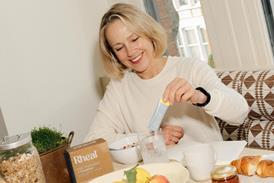





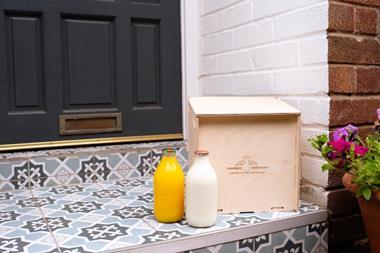
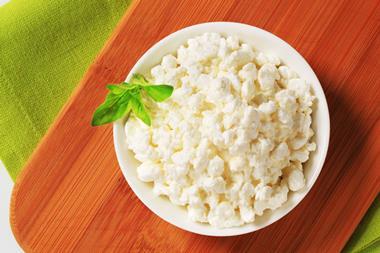

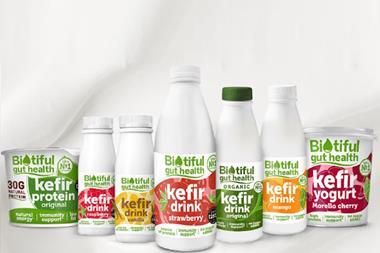
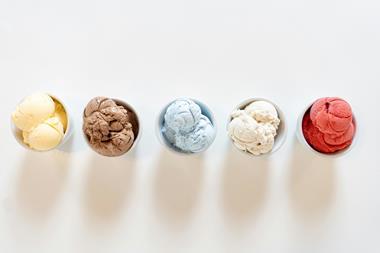



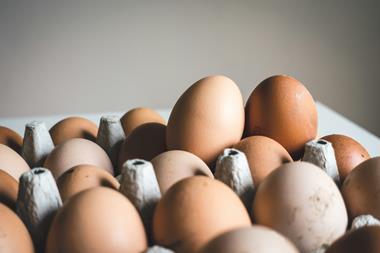

No comments yet